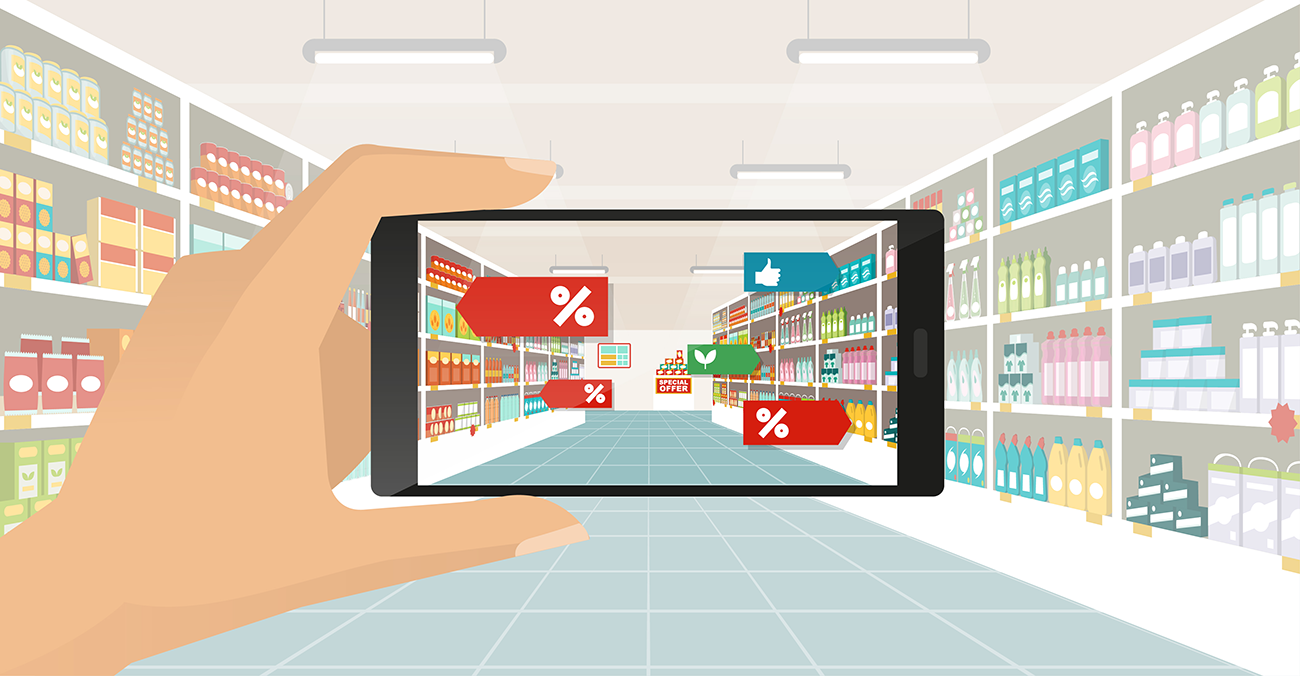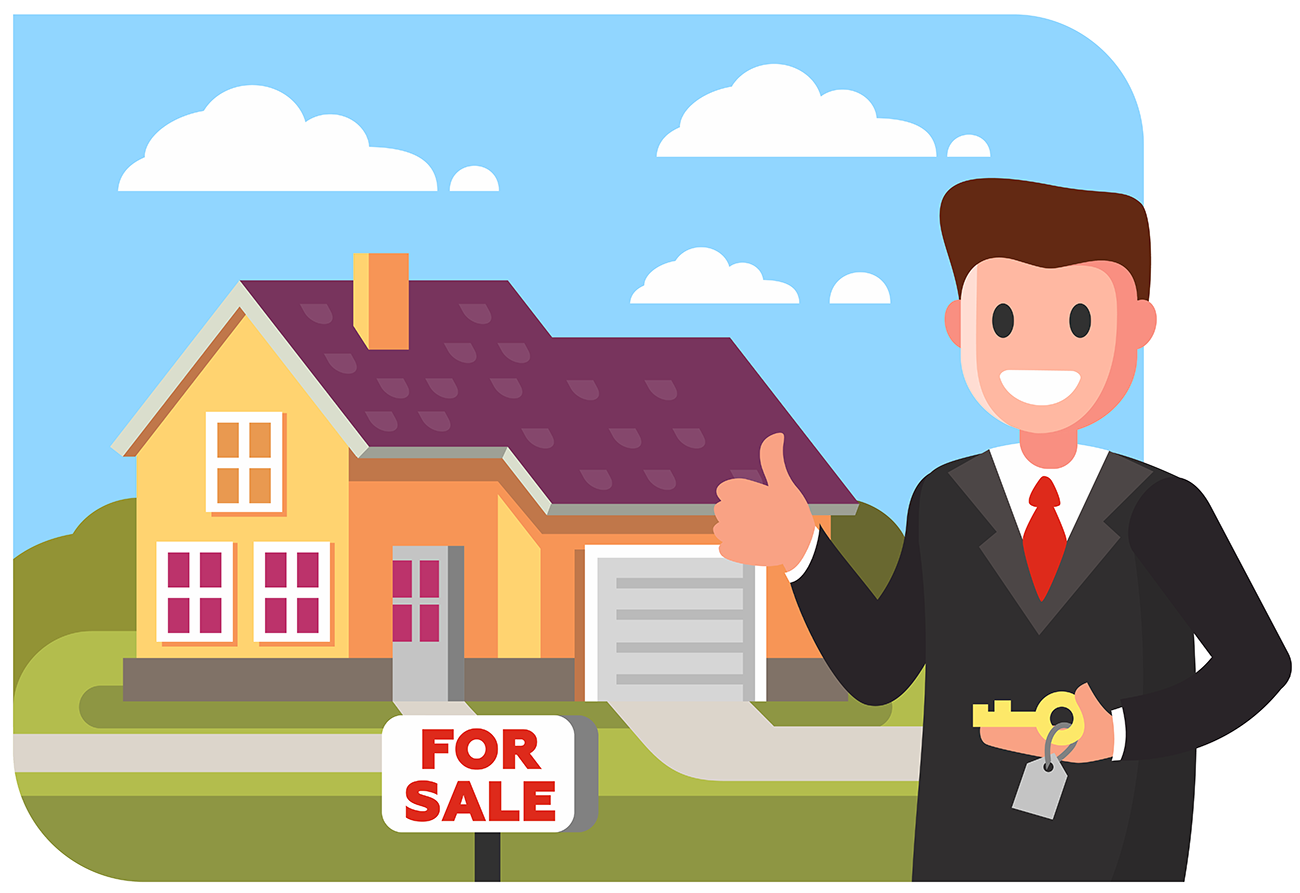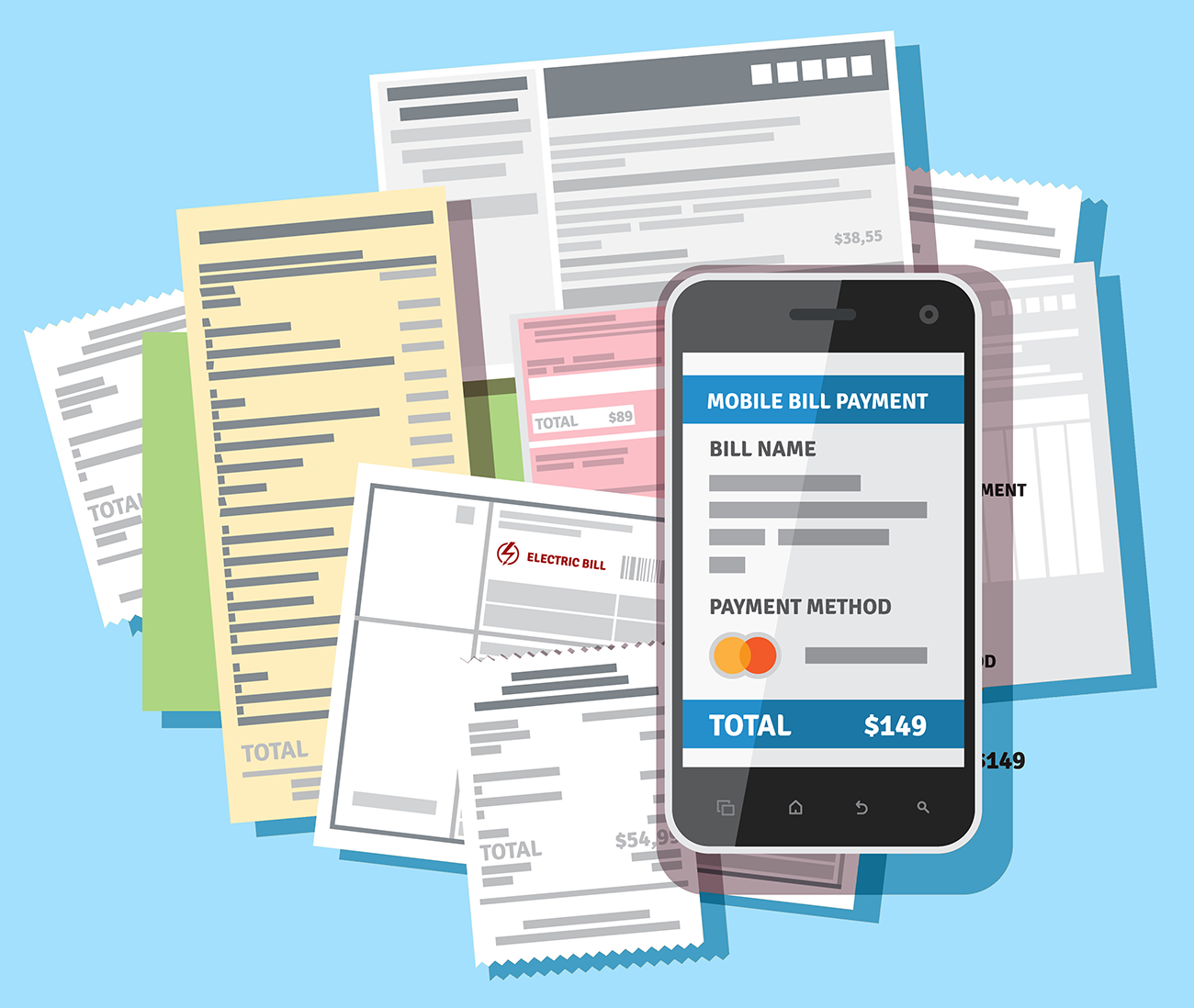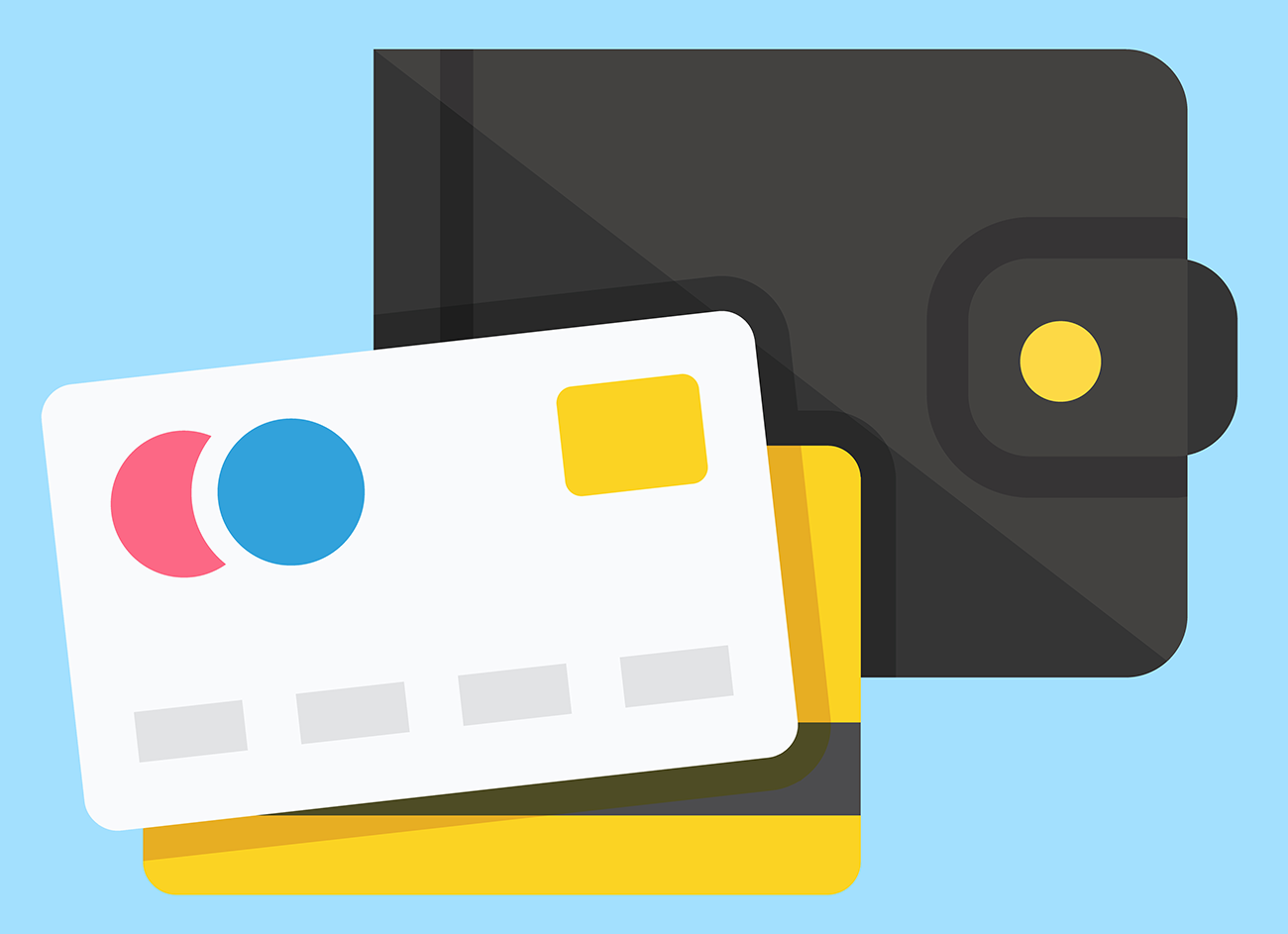 Compare Credit Cards
Compare Credit CardsUnsure which credit card offer you should take? Use this calculator to estimate the long-term costs of multiple credit cards which may have varying annual fees, introductory rates, ongoing rates or compounding intervals.
Enter your initial account balance and the terms for each card then this calculator will use the fixed payments you enter to figure out which card is a better deal. If you make varying payments then try to include your average payment amount to improve the accuracy of the calculation.
If a particular card does not have any introductory offer you can leave that field blank.
Guide published by Joelle Jacinto on November 25, 2019

Are you thinking of getting a credit card? Read this first to avoid the trap of credit card debt.
Credit cards have such a bad reputation for putting people in inescapable debt, especially when it seems every American is struggling to meet their monthly payments. According to Bloomberg, there are 480 million credit cards currently in active use, a 100 million increase from the pre-recession peak in 2008. Despite debt growth of around $68 billion, the use of credit cards persist because, well, they are useful, and quite irresistible, to be able to buy things you need without worrying about immediate cost.
Even though, as of 2019 Q2, credit card debt actually only makes up 7.79% of total consumer debt of $13.86 trillion, and is only one of four major debt areas that contribute to the total, credit card debt may be seen as the riskiest and most problematic debt to overcome, compared to the other debt types, which are mortgages, auto loans and student loans. This is because credit card debt is an unsecured, revolving debt, which may appear easier to pay off, but actually, unlike mortgages or student loans, grows over time.
Despite being a much smaller debt than mortgages ($1.08 trillion against $9.83 trillion from mortgages, 2019 Q3 – data taken from the Federal Reserve Bank of New York's Household Debt and Credit Report Q3 2019), acredit card debt is more difficult to pay off than a mortgage, and may take much longer. Credit card debts have a high interest rate because they are unsecured, while a mortgage is a secured debt, where a requirement of the debt is collateral security.
Collateral is a guarantee, a physical property that is pledged to the lender in case the borrower is unable to pay off the debt. When you buy a house, the house itself, in the form of the deed or land title, is typically set up as collateral. If you are unable to pay the full mortgage by the specified deadline, the house is seized by the bank. However, it should be easier to pay off a mortgage or an auto loan than a credit card debt because the installments made on the house or car are usually structured as fixed payments, always the same amount that was agreed on from the beginning of the loan.

The rise in mortgage debt is not necessarily bad news for Americans, which indicates that the housing industry is recovering from the recession in 2009. Indeed, mortgages are seen as good debt, because the house or property that the mortgage is taken out on typically gains value as the mortgage is paid off. The investment on the house appreciates most years, and even if it only does so at 3%, the value of the property will double in 24 years.
In contrast, credit card debt is an unsecured debt because of the absence of collateral. As there is no guarantee that the borrower can pay the lender back, a high interest rate is charged on top of the principal loan amount. Moreover, this interest rate is a variable rate, and it changes due to several factors. As credit card delinquency has increased over the years, with currently 37 million credit accounts marked as delinquent by over 90 days, as reported by Bloomberg. Consumers with poor credit scores may require using a secured credit card, where the borrower makes a cash deposit to act as collateral on the card, to help limit creditor risk as consumers with low credit scores rebuild their credibility.
The following table highlights recent interest rates across multiple financial products as of November 21, 2019.
| Loan Type | Classification | APR |
|---|---|---|
| 5-1 adjustable-rate mortgage (1) | secured by home | 3.39% |
| 15 year fixed-rate mortgage (1) | secured by home | 3.15% |
| 30 year fixed-rate mortgage (1) | secured by home | 3.66% |
| new auto loan with great credit (2) | secured by vehicle | 4.19% |
| used auto loan with great credit (2) | secured by vehicle | 4.69% |
| 48-month new car loan (3) | secured by vehicle | 5.27% |
| 60-month new car loan (3) | secured by vehicle | 5.27% |
| new auto loan with bad credit (2) | secured by vehicle | 14.88% |
| used auto loan with bad credit (2) | secured by vehicle | 19.62% |
| 24-month personal loan (3) | unsecured | 10.07% |
| Credit Cards | ||
| low interest (4) | unsecured | 14.16% |
| balance transfer (4) | unsecured | 15.05% |
| average rate charged on credit cards (3) | unsecured | 15.10% |
| business (4) | unsecured | 15.12% |
| airline (4) | unsecured | 16.90% |
| rewards (4) | unsecured | 16.96% |
| average rate charged on credit cards assessed interest (3) | unsecured | 16.97% |
| student (4) | unsecured | 17.23% |
| cash back (4) | unsecured | 17.13% |
| average (4) | unsecured | 17.21% |
| instant approval (4) | unsecured | 19.65% |
| bad credit (4) | unsecured | 24.93% |
Table sources:
The following table shows FICO credit score data from Experian, along with the impact it has on a borrower.
| Range | Rating | Population | Credit Impact |
|---|---|---|---|
| 300-579 | Very Poor | 16% | Applicants may not be approved for credit, or they may be forced to pay a fee or deposit to access credit. |
| 580-669 | Fair | 17% | Subprime borrowers. |
| 670-739 | Good | 21% | Roughly 8% of borrowers are likely to become seriously delinquent. |
| 740-799 | Very Good | 25% | Likely to receive lower interest rates for good credit. |
| 800-850 | Exceptional | 21% | Can access the best rates available. |
Using a credit card to make a purchase allows you to pay for it at a later time, providing a grace period of ideally 30-45 days. If you are able to pay for it in full when you receive your bill, you have cleared your debt and are using your card responsibly. If you leave a balance on the card, this and any purchases you make with the card in the next month are subject to an interest rate that is based on your credit score. Then you are no longer paying for only the original purchase, you are also paying interest. A balance which rolls over into the next billing cycle makes this a revolving debt.

Non-revolving debt has a fixed payment term, where the loan should be paid off by a definite date, and a fixed rate, or the same interest rate for the entire duration of the loan. Revolving debt has a variable interest rate, based on the actual balance of the loan and the annual percentage rate of interest (APR). The APR is the rate of interest that is charged on the loan, it may be fixed or variable according to the kind of loan involved. With credit cards, the APR is variable.
Consumers who only make minimum payments on their credit card bill will spend a lot on interest as even a small amount of debt can take many years to pay off. People who fail to make even a minimum payment also incur fines and, more importantly, get hit with higher interest rates. As the debt continues to revolve in this manner, freeing yourself from debt may seem to take forever, and perhaps even impossible to overcome.

Americans feel attached to their credit cards, with each individual owning an average of 4 cards, but concede that it is actually a love-hate relationship because of the challenging responsibility of maintaining them. Still, there are many benefits to using credit cards.
If you are thinking of getting a credit card, you should first decide why you need one and what you plan to use it for. Many people have specific uses for their cards – some use it primarily for travel expenses, such as booking flights or paying for gas, while others use it mostly to buy groceries, while others use theirs for all kinds of purchases possible.
There are many kinds of credit cards available for different consumer needs:

Your second concern in choosing a credit card is to find one with interest rates or APR that your personal budget can afford. Credit card companies are supposed to present the APR of a card as soon as a consumer shows interest in acquiring one, for them to compute whether they are able to sustain credit card expenses. Many however do not know what the APR means and possibly get a card that is not suitable for their needs. If you already have a credit card and you are not aware of what your APR is, it is usually indicated on your billing statement; otherwise you can call your card issuer and ask them.
You can use the above calculator to help you compare credit cards based on the APR of both cards and how much you can pay on your card on a monthly basis. This allows you to estimate costs of the different credit cards, or even using multiple cards at once, to let you decide which card suits your finances better.
You can also use the above calculator to appraise how long before you can fully pay off your balance, how much of your hard-earned income goes into interest, and which card is a better option.
Despite being responsible in paying the balance on your credit card, sudden emergencies may come up and your credit card is your only choice for massive expenses. Whichever the case, getting back on your feet financially should not feel like Mission: Impossible. If ever you find yourself in credit card debt, here are a few approaches that are worth a try.
Joelle sees writing as a craft, and is genuinely interested in the topics she tackles, which have ranged from finance and transportation, to pop music, to business advice, to society and culture, to performing arts. She has a Master's in Art Theory and Criticism from the University of the Philippines and is pursuing a PhD in Philippine Socio-Cultural Studies. Her works have been published in broadsheets, lifestyle magazines, online portals and academic journals. Her performing arts reviews have been published in Malaya, Manila Times, Critics Republic, Malaysia, and RealTime Arts, Australia, while her academic work appears in The Borneo Journal and the Journal for the Anthropological Study of Human Movement.